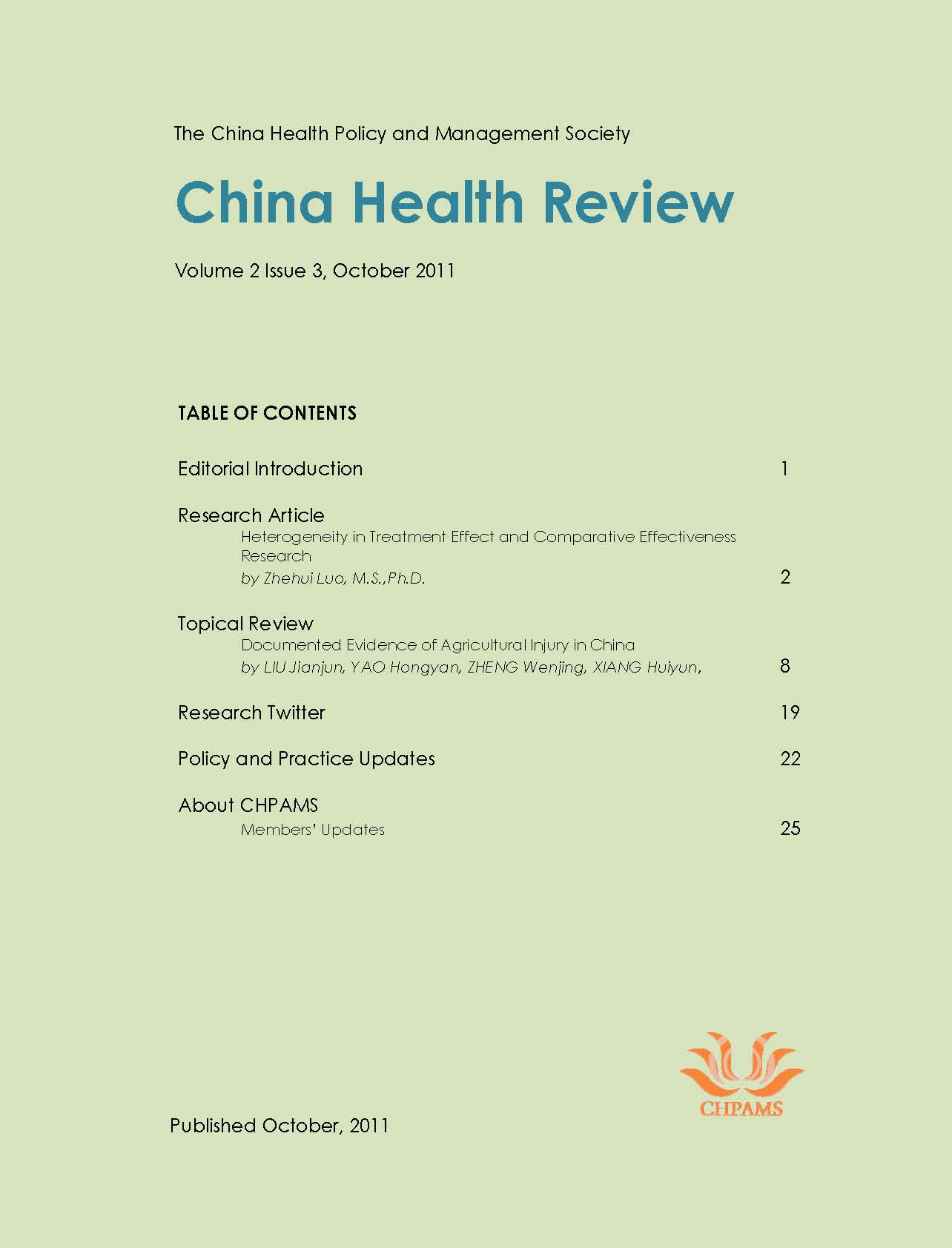Heterogeneity in Treatment Effect and Comparative Effectiveness Research
Keywords:
Treatment effect, comparative effectiveness research, heterogeneityAbstract
The ultimate goal of comparative effectiveness research (CER) is to develop and disseminate evidence-based information about which interventions are most effective for which patients under what circumstances. To achieve this goal it is crucial that researchers in methodology development find appropriate methods for detecting the presence and sources of heterogeneity in treatment effect (HTE). Comparing with the typically reported average treatment effect (ATE) in randomized controlled trials and non-experimental (i.e., observational) studies, identifying and reporting HTE better reflect the nature and purposes of CER. Methodologies of CER include meta-analysis, systematic review, design of experiments that encompasses HTE, and statistical correction of various types of estimation bias, which is the focus of this review.References
Basu, A. (2009). "Individualization at the Heart of Comparative Effectiveness Research: The Time for i-CER Has Come." Medical Decision Making 29(6): NP9-NP11.
Brumback, B. A., M. A. Hernán, et al. (2004). "Sensitivity analyses for unmeasured confounding assuming a marginal structural model for repeated measures." Statistics in Medicine 23(5): 749-767.
Bryan, J., Z. Yu, et al. (2004). "Analysis of longitudinal marginal structural models." Biostatistics 5(3): 361-380.
Dawson, R. and P. W. Lavori (2008). "Sequential causal inference: Application to randomized trials of adaptive treatment strategies." Statistics in Medicine 27(10): 1626-1645.
Federal Coordinating Council (2009). Report to the President and the Congress on Comparative Effectiveness Research. Washiongton DC.
Garber, A. M. and S. R. Tunis (2009). "Does comparative-effectiveness research threaten personalized medicine?" New England Journal of Medicine 360(19): 1925-1927.
Heckman, J. J., H. Ichimura, et al. (1998). "Matching as an econometric evaluation estimator." Review of Economic Studies 65(2): 261-294.
Hernán, M. A., B. Brumback, et al. (2001). "Marginal structural models to estimate the joint causal effect of nonrandomized treatments." Journal of the American Statistical Association 96(454): 440-448.
Hirano, K. and J. R. Porter (2009). "Asymptotics for statistical treatment rules." Econometrica 77(5): 1683-1701.
Imbens, G. W. (2004). "Nonparametric estimation of average treatment effects under exogeneity: A review." Review of Economics and Statistics 86(1): 4-29.
Imbens, G. W. and J. D. Angrist (1994). "Identification and estimation of local average treatment effects." Econometrica 62(2): 467-475.
Imbens, G. W. and J. M. Wooldridge (2009). "Recent Developments in the Econometrics of Program Evaluation." Journal of Economic Literature 47(1): 5-86.
Insel, T. R. (2006). "Beyond efficacy: the STAR*D trial." Am J Psychiatry 163(1): 5-7.
Kravitz, R. L., Duan, N. and J. Braslow (2004). "Evidence-based medicine, heterogeneity of treatment effects, and the trouble with averages." The Milbank Quarterly 82(4): 661-687.
Manski, C. F. (2007). "Partial identification of counterfactual choice probabilities." International Economic Review 48(4): 1393-1410.
McFadden, D. (1974). Conditional logit analysis of qualitative choice behavior. Frontiers in Econometrics. P. Zarembka. New York, NY, Academic Press.
Moodie, E. E. M., T. S. Richardson, et al. (2007). "Demystifying optimal dynamic treatment regimes." Biometrics 63(2): 447-455.
Murphy, S. A. (2003). "Optimal dynamic treatment regimes." Journal of the Royal Statistical Society Series B-Statistical Methodology 65: 331-355.
Robins, J. M. (1986). "A new approach to causal inference in mortality studies with a sustained exposure period - application to control of the healthy worker survivor effect." Mathematical Modelling 7(9-12): 1393-1512.
Robins, J. M. (2004). Optimal structural nested models for optimal sequential decisions. Proceedings of the Second Seattle Symposium on Biostatistics. K. Y. Lin and P. Haeagerty. New York, NY, Springer.
Rosenbaum, P. R. and D. B. Rubin (1983). "The Central Role of the Propensity Score in Observational Studies for Causal Effects." Biometrika 70(1): 41-55.
Rubin, D. B. (1973). "Matching to Remove Bias in Observational Studies." Biometrics 29(1): 159-183.
Snyderman, R. and M. A. Dinan (2010). "Improving health by taking it personally." JAMA 303(4): 363-364.
Thorpe, K. E., M. Zwarenstein, et al. (2009). "A pragmatic-explanatory continuum indicator summary (PRECIS): a tool to help trial designers." J Clin Epidemiol 62(5): 464-475.
Train, K. (2003). Discrete Choice Methods with Simulation. Cambridge, UK, Cambridge University Press.
Tunis, S. R., D. B. Stryer, et al. (2003). "Practical clinical trials: increasing the value of clinical research for decision making in clinical and health policy." JAMA 290(12): 1624-1632.

